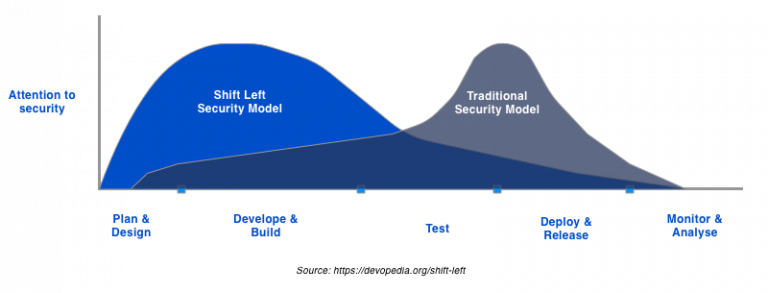As technology evolves and cyber threats grow more sophisticated, the comparison between manual and automated penetration testing becomes increasingly crucial. At Iterasec, we excel in providing comprehensive cybersecurity services that include both approaches. Although both methodologies play pivotal roles in cybersecurity defenses, understanding the nuances of manual penetration techniques alongside the efficiency of pentesting automation is key when choosing the most effective strategy for your business.
This article shares our extensive experience in the complexities of both automated and manual security testing. We will compare automated pentest tools with the nuanced, human-centric approach of manual pentesting, demonstrating how each method serves different security demands.
By examining the pros and cons of automated vs. manual penetration testing, we aim to show how manual testing, with its depth and precision, often results in a more robust security. However, the ultimate choice will depend on specific business needs and the nature of the threats faced.
We will provide insights to help technology companies strengthen their defenses against the constantly evolving landscape of cyber threats, guiding them toward making informed decisions that best suit their security strategies.
What is Manual Penetration Testing?
Manual penetration testing, also known simply as manual pentesting, involves cybersecurity experts actively exploring an organization’s systems and networks for security weaknesses. Unlike automated methods, this technique leans on the deep expertise and critical judgment of the tester. The goal of manual penetration testing is to simulate real-world attacks to uncover vulnerabilities that automated systems often miss, ensuring that the organization’s defenses can withstand skilled human hackers.
Common Types of Manual Penetration Testing
Manual pentesting can be classified into three main methodologies:
- White-box testing: Here, the tester has complete knowledge of the infrastructure and code they are testing, much like having a building’s blueprint before checking for weak points. This comprehensive information allows for a thorough examination of internal security.
- Black-box testing: Testers have no prior knowledge of the systems they are testing, similar to how an external hacker would attempt to penetrate the network. This lack of information can provide genuine insights into security from an outsider’s perspective.
- Gray-box testing: This is a combination of white-box and black-box testing where the tester has partial knowledge of the system. It allows testers to assess the system’s security from an insider and outsider perspective, providing a balanced view.
Advantages of Manual Penetration Testing
- Detects Further Issues: Manual testing can identify complex security issues that automated tools might overlook, especially those involving complicated user interactions or business logic flaws.
- Offers Practical Guidance: Testers provide tailored advice based on the specific vulnerabilities they find. This hands-on feedback is crucial for understanding how to protect systems better.
- Produces Accurate Results: Manual testing is precise in spotting and interpreting nuanced security problems, making sure vulnerabilities are found and understood in the context of the organization’s specific environment.
Disadvantages of Manual Penetration Testing
Despite its advantages, manual penetration testing does have drawbacks:
- It is often more time-consuming than automated tests, as it requires meticulous effort from skilled professionals.
- The cost can be significantly higher due to the labor-intensive nature of the tasks.
- It depends heavily on the expertise of the individuals conducting the test, which can lead to variability in the quality of the testing results.
When to Use Manual Penetration Testing?
Manual penetration testing is particularly valuable in complex environments where automated tools don’t provide sufficient coverage or in scenarios where tailored, in-depth insights into security vulnerabilities are required. It is also ideal for testing high-risk areas where the sophistication of manual tactics can make a significant difference in security assurance. For businesses needing a thorough understanding of their security posture to meet compliance standards or protect sensitive information, manual penetration test proves to be the most dependable choice.
Ensure that your defenses are robust and capable of protecting your assets against the dynamic threats of today's digital world.
This approach uncovers the gaps that automated scans overlook and provides the depth of analysis needed for critical security decisions. Furthermore, manual penetration testing is performed as ethical hacking, employing strategies that mimic actual hacker attacks. This method allows pentesters to uncover potential vulnerabilities in the same manner that an attacker might, providing an essential layer of realism and effectiveness to the security testing process.
What is Automated Penetration Testing?
Automated penetration testing, also known as automated pentesting, leverages software tools, and technologies to scan systems and networks for vulnerabilities without human intervention. This method uses a suite of tools designed to automatically detect and sometimes exploit weaknesses in the security infrastructure. While it offers a quick way to perform high-level security checks, automated pentesting doesn’t usually provide the check of deeper layers of security nuances that manual pentesting offers.
Tools and Technologies Commonly Used in Automation
Several tools and technologies are integral to automated penetration testing. These include:
- Static Application Security Testing (SAST) tools, which analyze source code for security vulnerabilities.
- Dynamic Application Security Testing (DAST) tools that test applications as they run to find runtime vulnerabilities.
- Vulnerability Scanners: These tools scan networks and applications to identify known security issues.
- Security Orchestration, Automation, and Response (SOAR) platforms: These integrate with other security tools to automate responses to security threats, some examples are The IBM Security QRadar SOAR platform or Palo Alto Networks Cortex XSOAR.
Advantages of Automated Penetration Testing
Automated pentesting offers several key benefits:
- Speed and Efficiency: Automated tools can scan systems much faster than human testers, covering large volumes of code or networks quickly to identify vulnerabilities. It may be the first step – a quick check – before the manual pentesting.
- Consistency: Automation ensures that each test is performed similarly.
- Frequency: Automated tools can be run as often as needed, allowing for continuous security assessments.
Disadvantages of Automated Penetration Testing
However, automated penetration testing does have its limitations:
- Less Thorough Coverage: While automated tools are great at picking up known vulnerabilities, they might miss more subtle, complex security issues that require human insight to detect.
- Lack of Contextual Understanding: Automated tests do not understand context equally to a human tester. They can report false positives or fail to prioritize vulnerabilities based on actual business risk.
When to Use Automated Penetration Testing
Automated pentesting is particularly useful in certain scenarios:
- Preliminary Scans: It’s ideal for initial scans in high-volume environments where speed is crucial and resources are limited. It may be used before manual pentesting to identify common vulnerabilities.
- Regular Security Assessments: Automated tools provide an effective way for consistent monitoring for regular maintenance and checks.
- Compliance Checks: Automated testing can ensure systems meet standard compliance requirements by regularly checking for compliance-related vulnerabilities.
Automated vs Manual Penetration Testing
When it comes to strengthening cybersecurity defenses, both automated and manual penetration tests play critical roles. Each method offers distinct advantages and faces unique challenges. Understanding the strengths and weaknesses of each can help decide the right approach for the specific security needs.
Strengths and Weaknesses of Automated Penetration Testing
Strengths:
- Speed: Automated pentesting can quickly scan and identify vulnerabilities across vast networks and systems, making it essential for high-volume environments.
- Consistency: Automation ensures that tests are conducted in the same manner every time, reducing human error and variability in the testing process.
- Cost-Effectiveness: Once set up, automated tools can run tests at no additional cost, which is especially beneficial for routine security checks.
Weaknesses:
- Surface-Level Analysis: Automated tools excel at identifying known vulnerabilities but often lack the depth to uncover complex security issues that require nuanced understanding.
- Contextual Limitations: Automated pentesting cannot contextualize its findings, leading to prioritizing less critical vulnerabilities or missing out on understanding the business impact of some weaknesses.
- Absence of Human Insight: Automated testing lacks the human approach that is crucial in cybersecurity. Since all hackers are human and often do not rely on automated tools for their attacks, understanding their tactics requires a human touch. In scenarios where robust security is essential, the discerning judgment and adaptability of manual pentesting is indispensable.
Strengths and Weaknesses of Manual Penetration Testing
Strengths:
- Depth of Testing: Manual penetration testing digs deeper into security systems, identifying and exploiting vulnerabilities automated tools might miss, especially those related to business logic and user interactions.
- Adaptive Testing: Human testers can adapt their testing strategies in real time, providing a dynamic approach to discovering and solving security challenges.
- Customized Insights: Manual pentesting offers detailed recommendations based on specific vulnerabilities, which are invaluable for complex or critical systems.
Weaknesses:
- Time-Consuming: This method requires more time due to the detailed nature of the work, which can be a drawback in environments where speed is critical.
- Higher Costs: Manual testing is more expensive than automated testing, primarily due to the skilled labor involved.
Choosing Between Automated and Manual Penetration Testing
The choice between automated and manual pentesting often depends on several factors:
- Resource Availability: Larger organizations might have the resources to conduct thorough manual tests, while smaller entities might rely more on automated solutions.
- Compliance Requirements: Certain industries might require more detailed manual testing to meet strict regulatory standards.
- Threat Landscape: Organizations facing highly sophisticated threats might benefit more from manual testing techniques to ensure a deeper layer of security.
In practice, using both automated and manual penetration testing can be advantageous. Automated tools are suitable for routine scanning and initial assessments, identifying basic vulnerabilities quickly. However, manual testing plays a crucial role, especially for exploring more complex issues that automated scans might flag.
By integrating manual testing, businesses can investigate these alerts, adding a layer of human insight that is essential for a comprehensive security strategy. This approach covers a broad spectrum of threats and ensures the depth of security analysis is maintained, providing thorough protection where it’s most needed.
Why Manual Penetration Testing is Better Than Automated
While both automated and manual penetration testing are valuable, there are specific scenarios where the latter stands out. The hands-on approach of manual pentesting offers advantages crucial for understanding and effectively securing an organization’s digital assets.
Human Expertise: The Irreplaceable Value of Human Insight
One of the strongest arguments for manual penetration testing is the level of human expertise. Skilled professionals bring their understanding of complex systems and human behavior to identify and exploit vulnerabilities that automated tools simply can’t. This expertise is especially crucial when dealing with sophisticated security threats that require a nuanced approach. For instance, a manual tester can think like an attacker and uncover subtle flaws like logic errors, which automated tools might overlook.
Customization and Precision: The Benefits of Tailor-Made Testing Approaches
Organizations can customize manual penetration testing techniques to meet their specific needs. This customization allows testers to focus on critical areas where sensitivity and precision are essential. For example, systems that handle sensitive financial information or personal data can benefit from the detailed attention and custom-tailored testing strategies only human testers can provide. This approach ensures that the security measures are adequate and optimized for the organization’s environment.
Adapting to Evolving Threats: The Advantage of Human Adaptability
The cyber threat landscape is always changing, with new vulnerabilities and attack techniques constantly emerging. Manual penetration testers can adapt their methods in real time, a flexibility that is crucial in staying one step ahead of potential attackers.
Unlike automated tools, which rely on predefined criteria and can quickly become outdated, manual testers can adjust their approach based on the latest threat intelligence and ongoing developments within the field. This adaptability makes manual penetration testing an integral tool for organizations needing the highest levels of security.
Strengthen your security before threats become breaches.
Why Manual Penetration Testing Costs More Than Automated
Manual penetration testing often comes with a higher price tag compared to automated testing. This difference in cost is due to several key factors:
Workload
Manual penetration testing is labor-intensive, requiring skilled professionals to thoroughly analyze and test the security of systems. These experts spend considerable time planning, executing, and reviewing the tests compared to automated tools that can run assessments with minimal human intervention.
Expertise
The level of expertise required for manual testing is significantly higher than what is needed to oversee automated tools. Manual testers are not just operating software; they are skilled cybersecurity professionals with a deep understanding of attack methodologies and defensive tactics. This expertise is costly because it is rare and highly valued in the cybersecurity field.
Time Consumption
Manual tests are more time-consuming because they involve a detailed, hands-on approach. It includes the initial testing, the thorough review of the findings, and the preparation of detailed reports that provide actionable insights. The time factor increases the overall cost as it extends the hours professionals dedicate to a single testing project.
Manual Pentesting or Automated: Which One Is Right for Your Business?
Choosing between manual and automated penetration testing depends on various factors, including the size of your business, the industry you operate in, and your specific security needs.
Business Size
For large organizations with complex systems, manual penetration testing often becomes essential. It’s particularly valuable for addressing sophisticated security challenges that automated tools might miss. While smaller businesses might initially gravitate towards automated testing for its cost-effectiveness and speed, the precision of manual testing can provide long-term benefits by identifying deeper vulnerabilities that protect against serious threats.
Industry
Industries like finance and healthcare, which are governed by strict regulatory standards, generally find the thoroughness of manual testing aligns better with their needs. In these sectors, where the consequences of data breaches can be severe, investing in detailed manual testing ensures compliance and secures sensitive data effectively.
Specific Security Requirements
For businesses that handle highly sensitive information or are at increased risk of targeted attacks, manual testing is often indispensable. Its depth and precision provide a level of security assurance that automated testing simply cannot match. Conversely, companies needing regular updates and quick vulnerability checks might find automated testing suitable for those specific functions.
While the choice between manual and automated penetration testing involves weighing various factors, a thoughtful evaluation of your cybersecurity needs might reveal a preference for manual testing. Integrating automated testing for routine scans and compliance, coupled with a focus on manual testing for more critical, in-depth security analysis in response to specific threats or significant system changes, ensures a strict defense. This approach covers broad vulnerabilities and provides the thorough inspection necessary to protect against the most cunning threats, effectively aligning with the unique needs of your business.
Conclusion
Manual testing, with its detailed analysis and adaptability, is indispensable for identifying complex vulnerabilities and offering tailored security insights. While automated testing is valued for its speed, consistency, and cost-effectiveness, ideal for routine scans and handling large volumes of data, it often serves as a preliminary step.
Choosing the right approach between manual vs automated penetration testing depends on your business size, industry, and specific security challenges. It’s essential for companies to carefully evaluate their unique needs to determine the most effective penetration testing strategy. Iterasec offers expert-driven, state-of-the-art penetration testing services designed to meet diverse cybersecurity demands. Partner with us to ensure that your defenses are robust and capable of protecting your assets against the dynamic threats of today’s digital world.


